But I did anyway. Because I saw this as an even bigger and more valuable opportunity for Aaron and I to teach the kids about money and spending. And what it really means to want something...
So we asked the kids to count their money and separate their coins to see what kind of purchasing power they really had. We explained that if they really wanted to buy something at the toy store, they could, but only with the amount of money they had saved.




Both kids agreed - and before they could step out of their pj's, the piggy banks were on their backs and coins were flying everywhere...
Next stop: the bank. To see and learn how money comes in different forms - and how the value of saving coins they collect from around the house, adds up - quickly.
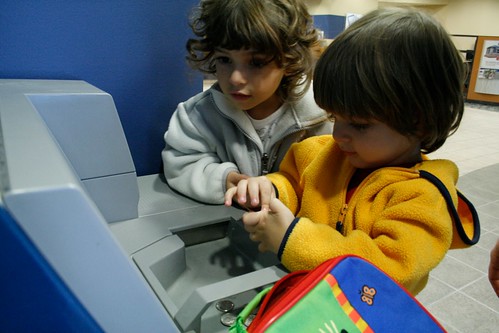
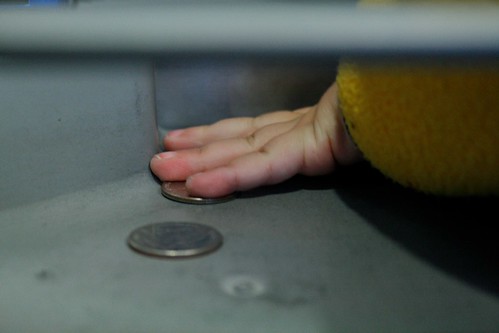
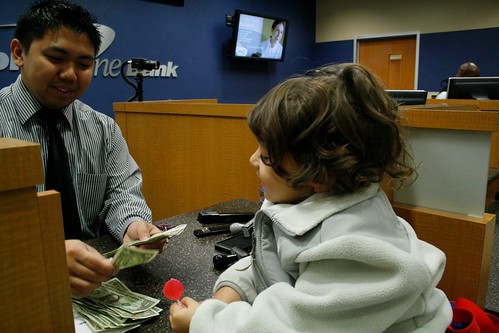
Final destination - the toy store. Noah headed to the first aisle, where rows of cars and trucks shined in every color. Ava headed to the window display to finish her breakfast and play with the toys on demo...
When it was time to go, Noah sat on the counter while clinging onto his cars and watched his trade-in take place. Noah's first purchase was a success - with even a few dollars remaining!
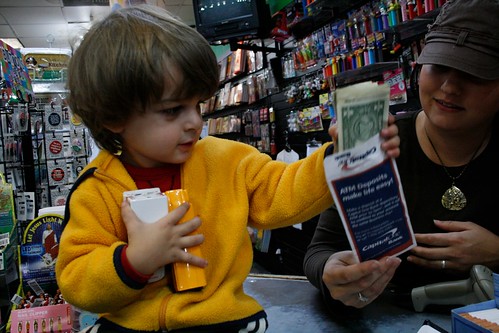
Ava on the other hand - took longer than expected.

Ava on the other hand - took longer than expected.
"Ava, we have to get back home soon. Do you want to pick out your toy now?"
(short pause)
"Well.... mommy, I already have toys at home. I want candy."
36 cents later, Ava purchased a packet of FunDip candy, leaving her with more than $21 to return back to Big Pink...
The kids seized an opportunity on this cold rainy morning - and so did I. Lost wages for hours I could have worked can't compare to the lessons the kids learned about saving and spending...
Now if only teaching them about working for money, could be this easy...
Our Family tips:
1. If you haven't done so already, purchase a piggy bank or make one at home using a plastic jar with a secure lid (and cut a slit at the top) to begin collecting loose change around the house. This is also a great way to practice counting.
2. Seize opportunities. Taking your kids to work helps children identify the exchange they experience when you are away and its relevance to the family dynamics. Ava and Noah have gotten so much better and accepting of me having to go onsite for a client project sometimes because they have a face to match up with the names I say I am going to go visit.
3. Give them age-appropriate value. In other words, what does "money" buy? For example, tokens for Chuck E Cheese. Candy at the toy store... and so on. And demonstrate what a child would have to trade to get what they want.
4. Set boundaries. Be consistent. And creative. I admit, it's really hard saying no to the kids. But I also know that it's even harder in the long run. Find a balance that's right for your family.
5. It's never to early to set goals - especially financial ones. Place various markers on your child's piggy bank/jar and label with items they mentioned wanting (tape pictures for little ones). First marker could be candy. Second marker could be stickers. Third marker could be a doll... and so on. As your child fills the jar with coins (collected from loose change or allowance) they could visually see how many coins it takes to fill up and earn the item next to the marker they wish to earn. And at the same time, see what happens if they cash in at the first marker, and how they have to start over each time.
Wonderful online resources on talking to kids about money:

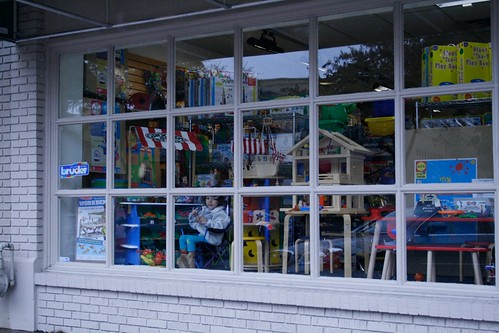
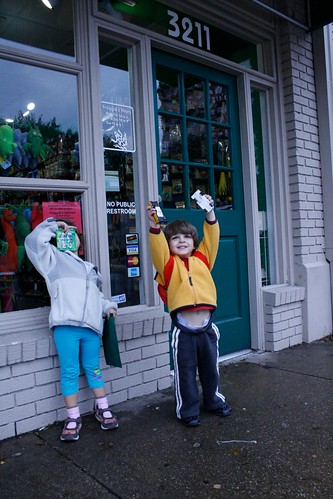
I absolutly loved this idea! very smart and creative. the kids looked like they really enjoyed the entire experience! Also, thanks for the new posts. The pictures are beautiful
ReplyDeleteI'm glad you are back! I've missed your writing. What store did you take them to?
ReplyDeleteI'm overly hesitant with coins from a previous scare when our little one tried to swallow (and choked) on a quarter. Any ideas for paper money and how to distinguish it for a toddler?
Thanks "A" - it was a great unique experience. I figured the sooner they learn about the value of saving and spending money - the better off we will be as a family... and society... :)
ReplyDeleteUltimately it's about making choices. And through their experiences practicing - they will get better at making smarter choices... and so on...
Well - that's my theory anyway ;)
Awww - so nice to be back Mrs. Bianca - and even more so - to be missed :) XO. Thanks so much for not blacklisting me - I know how outdated blogs can be a drag ;)
ReplyDeleteThis toy store is called Froggies - off of Knox/Henderson. Right across the street from Pottery Barn Kids. It's got fun toys for both young and old.
Oh, I can see why hesitating using real coins after such a scare. But do you think since then, she will avoid the curiosity to taste again?
That's how my kids started too. But after a few time outs... and some stern talking... I haven't had that problem again. I also used the tactic of how "dirty" money is because it has a lot of germs. So if they don't want their tummies to hurt, they shouldn't put it anywhere, and I mean anywhere! (my kids have a tendency to also test and see what will fit inside their nostrils), but only in their piggy banks if they want to save for candy or a new car...
I've seen some large cardboard cutouts of coins at Lakeshore - you could start there to introduce your little sweet to the idea of money. And then cover a shoe/cereal box and have her drop them in, and after awhile, "cash out" and count how much she was able to save. Then exchange the paper/coins for real ones or dollar bills for her to use to "buy" something at your next shopping spree.
And this effort will be a valuable precursor to those summers when the kids will want to have a lemonade stand. Oh I can't wait! Now we're getting into the "working" aspect... and they will have to learn how to give change... and calculate profit margins... and... ;)